1. HTN
1.1. difinitions
1.1.1. Normal
1.1.1.1. less than 120/80
1.1.2. prehypertention
1.1.2.1. 120/80 - 139/89
1.1.3. hypertention
1.1.3.1. stage 1
1.1.3.1.1. 140/90 to 159/99
1.1.3.2. stage2
1.1.3.2.1. 160/100 +
1.1.4. white coat hypertention
1.1.4.1. only at the hospital
1.1.5. masked hypertension
1.1.5.1. normal in hospital bad outside
1.1.6. hypertensive emergency
1.1.6.1. diastolic more than 120 with end organ damage
1.1.7. hypertensive urgency
1.1.7.1. asymptomatic
1.1.8. orthostatic hypotension
1.1.8.1. drop of 20 or more in systolic pressure after standing
1.2. screening
1.2.1. every 2 years for normal people
1.2.2. yearly for prehypertension
1.3. diagnosis
1.3.1. based upon average of three readings measured at different visits spaced over weeks to months after the screening
1.4. management
1.4.1. nonpharmacological for all
1.4.1.1. weight reduction
1.4.1.2. DASH diet
1.4.1.3. sodium restriction
1.4.1.4. physical activity
1.4.1.5. moderation in alcohol
1.4.2. pharmacological
1.4.2.1. do not treat mild (less than 150/90) without CVD
1.4.2.2. options for monotherapy
1.4.2.2.1. thiazide
1.4.2.2.2. ccb
1.4.2.2.3. ACE
1.4.2.2.4. ARB
1.4.2.2.5. special indications
1.4.2.3. combination
1.4.2.3.1. ACE or ARB + CCB is recommended
1.4.2.3.2. do not combine ACE and ARB
1.4.3. goal pressure
1.4.3.1. revisit every 2-4 weeks untill achived
1.4.3.2. after that every 3-6 months
1.4.3.3. less than 140/90 for people less than 60 or with diabetes or CKD without proteinuria
1.4.3.4. less than 150/90 for people older than 60
1.4.3.5. more strict goal with atherosclerosis and proteinuriea
2. Diabetes
2.1. screening
2.1.1. tests
2.1.1.1. FPG
2.1.1.1.1. normal: less than 100 mg/dL (5.6 mmol/L)
2.1.1.1.2. Impaired: 100-125 mg/dL (5.6-6.9 mmol/L)
2.1.1.1.3. diabetic: 126+ mg/dL (7 mmol/L)
2.1.1.2. 2-h OGTT
2.1.1.2.1. normal: less than 140 mg/dL (7.8 mmol/L)
2.1.1.2.2. impaired: 140-199 mg/dL (7.8-11 mmol/L)
2.1.1.2.3. diabetic: 200+ mg/dL (11.1 mmol/L)
2.1.1.3. A1C
2.1.1.3.1. normal: less than 5.7%
2.1.1.3.2. impaired: 5.7%-6.4%
2.1.1.3.3. diabetic: 6.5%+
2.1.1.4. RPG (not for screening)
2.1.1.4.1. diabetic 200+ mg/dL (11.1 mmol/L)
2.1.2. every 3 years for all adults with BMI >25 and one additional risk factor
2.1.3. without risk factors, start at 45 years of age.
2.1.4. confirm diabetes by repeating same test
2.2. evaluation
2.2.1. physical exam
2.2.1.1. at every visit
2.2.1.1.1. BMI
2.2.1.1.2. BP
2.2.1.1.3. visually inspect the feet
2.2.1.1.4. visual acuity
2.2.1.2. annually
2.2.1.2.1. thorough foot exam
2.2.1.2.2. detailed eye exam
2.2.2. investigations
2.2.2.1. A1C
2.2.2.1.1. every 3 months if not controlled or new med
2.2.2.1.2. every 6 months if stable
2.2.2.1.3. Glycemic control
2.2.2.2. annually
2.2.2.2.1. fasting lipids
2.2.2.2.2. renal function test
2.2.2.2.3. urine albumin to creatinine ratio
2.3. Management
2.3.1. non pharmacological
2.3.1.1. diet
2.3.1.2. exercise
2.3.1.3. weight reduction
2.3.2. pharmacological
2.3.2.1. metformin
2.3.2.1.1. at the time of diagnosis
2.3.2.1.2. contraindicated in
2.3.2.2. oral hypoglycemic drugs
2.3.2.2.1. sulfonylureas
2.3.2.2.2. meglitinides
2.3.2.3. aspirin
2.3.2.3.1. men over 50 and women over 60 with an additional risk factor
2.3.2.3.2. not recommended under age of 30
2.3.2.3.3. clopidogrel is an alternative if allergic
2.3.2.4. statin therapy
2.3.2.4.1. if more than 40 and one more cvd risk factor start statin therapy regardless of lipid level
3. Hypothyroidism
3.1. screening
3.1.1. TSH is the best to screen with
3.1.1.1. normal 0.5-5 mU/L
3.1.2. then order T4
3.2. treatment
3.2.1. synthetic thyroxine (T4)
3.2.2. measure TSH after six weeks and adjust dose
3.3. subclinical hypothyroidism
3.3.1. TSH high but T4 normal
3.3.2. treat if TSH is 10 or +
3.3.3. TSH is between 4.5 to 10 in non elderly, treat if
3.3.3.1. symptomatic
3.3.3.2. high titers of TPO antibodies
3.3.4. DO NOT treat elderly (over 70) if TSH between 4.5 to 8
3.3.5. treat pregnant or wishing to become pregnant if TSH is more than 2.5
